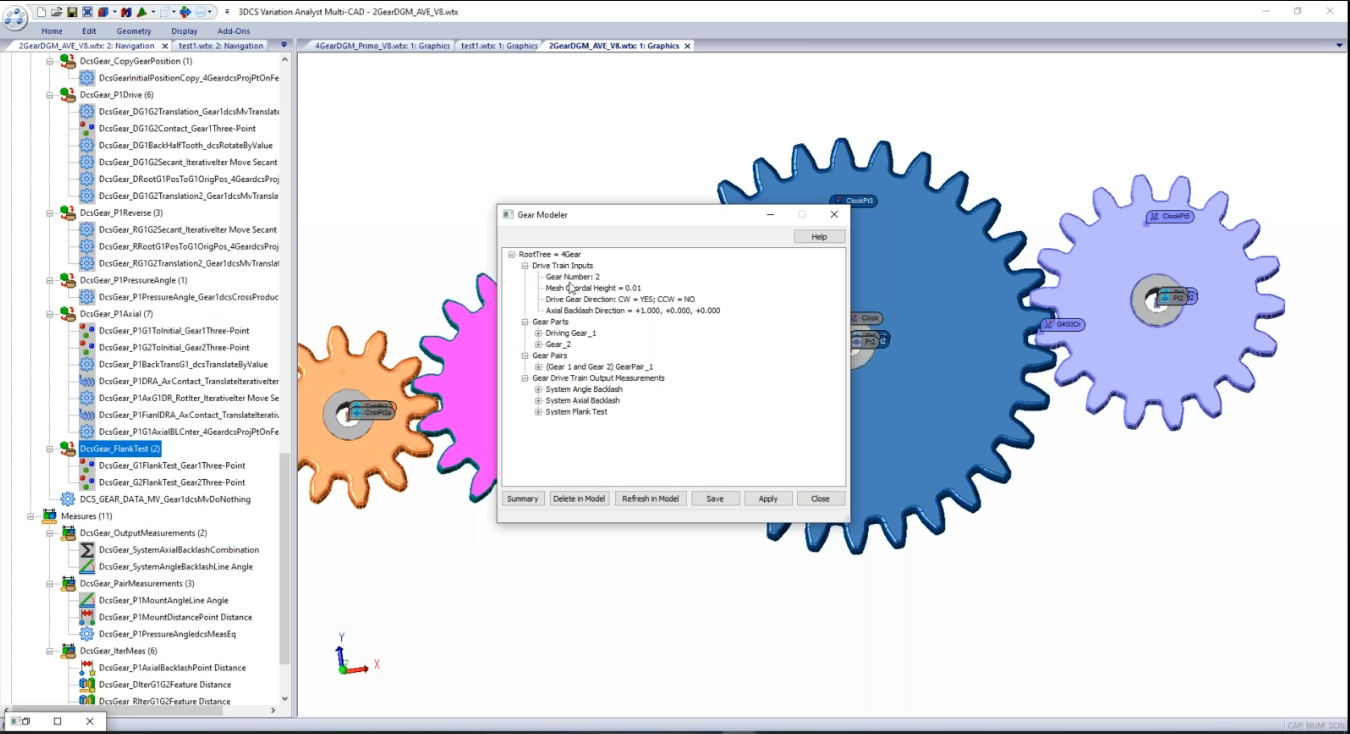3DCS Variation Monte Carlo analysis with multiple tooth contacts and gear rotations are used on two standard gear tests, axial backlash, angle backlash and a flank test pattern. Charts, illustrations and results for a Spur Gear Train are used to present the conclusions graphically.

Axial and Angular Backlash are calculated for the gears and charted by angle degree. Additionally, the flank test results with multiple tooth to tooth contact are also shown. The Angle Backlash “Kickback” analysis for the one gear set can be derived from the calculation.
“Kickback is calculated as the maximum range of the angle backlash.
The two standard tests compare a gear with specified GD&T for the bore and teeth against a Nominal Gear, Master Gear. The standard test are:
● Fi’’ Total Radial Composite Deviation - variation in center distance rotated 1 revolution. This is the Axial Backlash Range.
● ftp - Single Pitch Deviation - deviation of the arc length between adjacent teeth along the reference circle, compared to nominal.
The analysis model statistically summarizes the Monte Carlo sequence stages for each measurement to identify the GD&T frames and hole/pin clearances for the contribution percentage. In the model, rotational capability and the analysis of rotation with three teeth in potential contact are used for collision detection. The model also uses visual animation to provide important clues and verifications by way of frame-by-frame move sequences. These
identify specific random deviation sequences and allow for tolerance isolation.
One finding is that the range of angular and axial backlash measurements of a gear train can be analyzed with a single tooth to tooth rotation of the Output Gear. That is, for a single stage gear
train, the Monte Carlo evaluation does not require a 360⁰ rotation of the Output Gear, only the angle discretization for one tooth to tooth rotation of the Output Gear.
DCS will never share your information with a third party or add you to a mailing list without permission. Read our privacy policy to learn more about how DCS protects your information.